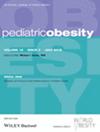Childhood sleep and obesity risk: A prospective cohort study of 10 000 Swedish children
Abstract
Objectives
To identify factors affecting early childhood sleep, and investigate the relationship between sleep and overweight/obesity in childhood.
Study Design
Data were collected using parental-completed questionnaires from N = 10.840 one-year-old children in the prospective ABIS-study (All Babies in Southeast Sweden), followed up until 8 years of age. Chi-squared test and Pearson Correlation were used to assess the relationship between covariates affecting the children's sleep. Subsequently, longitudinal mixed model analyses were used to predict the effect of different sleep dimensions (bedtime, sleep duration, sleep quality, and the number of awakenings) on BMI Z-scores.
Results
Children to parents born in Sweden, parents with higher education, non-single parents, non-smoking mothers during pregnancy, and children with fewer siblings, were more likely to have appropriate sleep habits at 1 year age. A greater number of awakenings and nocturnal feeds, and particularly later bedtime (β = −0.544, p < 0.0001) were linked to shorter sleep duration. Sleep duration early in life was negatively associated with BMI Z-scores (adjusted effect estimate [95% CI]: β = −0.09, [(−0.15) – (−0.03)], p = 0.005) later. In addition, higher birth weight, small size for gestational age, unhealthy food habits, children of mothers who smoked during pregnancy, and higher parental BMI resulted in higher BMI Z-scores.
Conclusion
The child's BMI Z-score increases by 0.09 units with every hour shorter sleep duration, indicating that short sleep duration might increase the risk of overweight and obesity in children. Parental educational interventions advising appropriate sleeping patterns should be considered when implementing strategies to combat the development of childhood obesity.

 求助内容:
求助内容: 应助结果提醒方式:
应助结果提醒方式:


